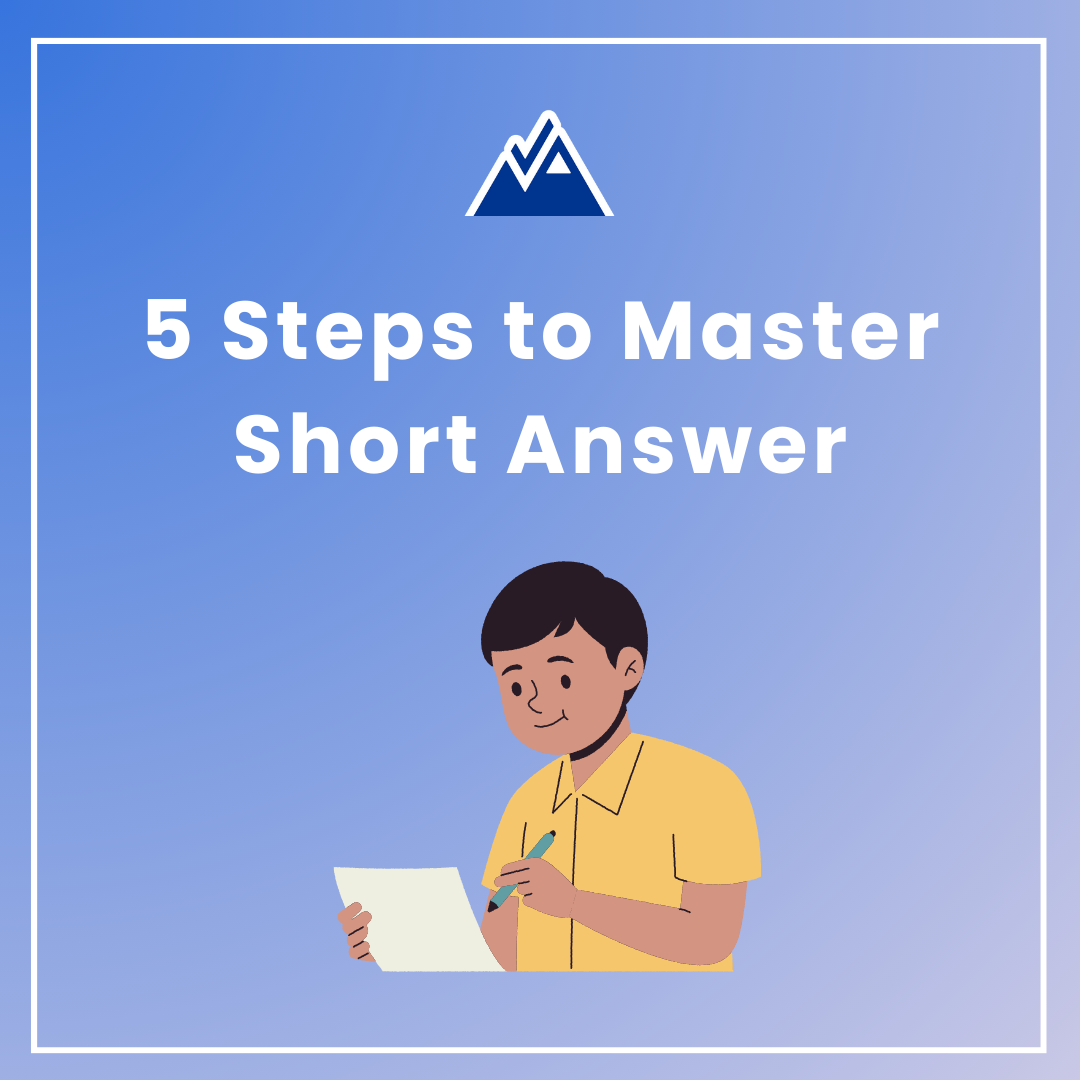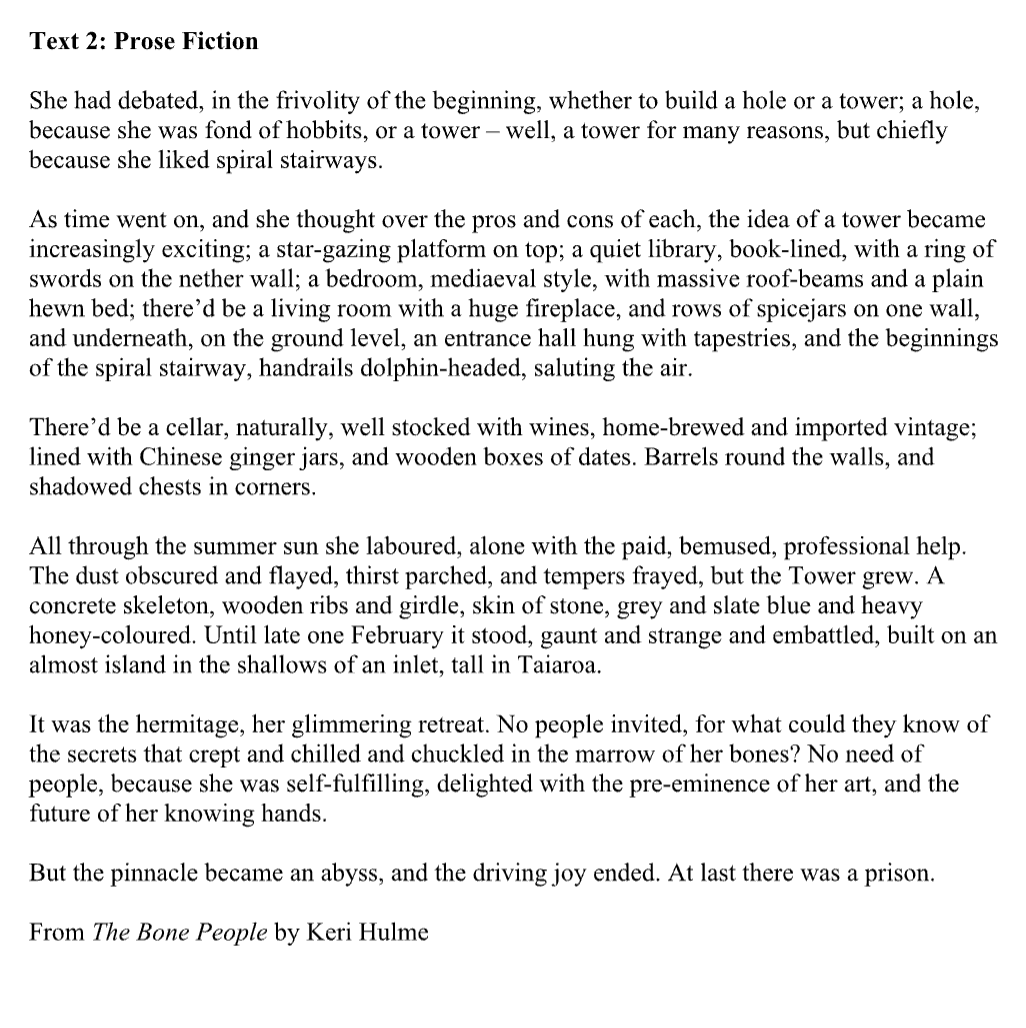5 Steps to Master HSC Short Answer
Short answer questions in Paper 1 can be intimidating. You’re under time pressure, you have to read dense or confusing passages, and you’re expected to produce sharp, well-structured micro-analysis in just a few minutes. But the good news? Once you learn the structure and practice regularly, short answers become one of the easiest marks to pick up in the exam.
Short answers matter for two big reasons:
They make up a large portion of Paper 1, and strong responses give you a head start before you even reach the essay.
The skills you learn in short answer writing — micro-analysis, unpacking rubric terms, and linking techniques to meaning — are the same skills you’ll need for essay body paragraphs in other modules.
Step 1: Read the Question First
Before you dive into the text, always read the entire question carefully. This helps you know exactly what to look for. Highlight or underline the key parts:
Command term: e.g. explain, analyse, evaluate. These direct the style of your answer. “Analyse” means you must show how meaning is constructed, while “evaluate” requires you to make a judgement. If you’re unsure, memorise the NESA glossary — it’s a lifesaver.
Verb about the composer: e.g. explores, represents, conveys, reflects. These words hint at what the marker expects you to identify. Use them (or synonyms) in your response to show you’re addressing the question.
Form or technique focus: sometimes the question specifies a technique (e.g. imagery) or a form (e.g. poem, non-fiction). You must include these in your answer. For a poem, comment on conventions like rhyme or enjambment; for a speech, discuss rhetorical appeals like ethos, pathos, or logos.
Experience/theme: questions often ask about “the human experience.” Don’t leave this vague. Specify an experience (e.g. love, grief, frustration) or an emotion (e.g. despair, joy). The more specific, the stronger your answer.
Step 2: Read the Text Strategically
When you first read the text, don’t rush to circle techniques. Focus on comprehension and purpose: what is the composer actually saying about the human experience or theme in the question? This first reading is where you shape your topic sentence idea — the main argument your answer will make.
Once you’ve got that idea, go back for a second pass. Now pick quotes that best support your point. Keep them short (5–7 words max) and make sure you can actually analyse them. In the HSC, you can’t highlight — but you can crease the page with your nail, lightly mark the margin, or fold a corner to find the spot quickly. Think of it like this:
Stage 1: Big picture → “This text shows frustration as destructive due to its ability to inhibit human desire.”
Stage 2: Evidence hunt → find a metaphor, image, or tonal shift that reinforces that destruction.
This way, your analysis is always driven by meaning, not just random techniques. The topic sentence is your destination, and the quotes are the path that gets you there.
Step 3: Manage Your Time & Techniques
A good rule of thumb: two minutes per mark.
4-mark question → 8 minutes
5-mark question → 10 minutes
During reading time, quickly calculate when you should move on from each question and jot it down. If you’re running over time, move on — you can always come back in the spare 5 minutes at the end
Think of it like this: 1 mark = 1 technique, minus one for the topic sentence.
So:
4 marks → 3 techniques + topic sentence
5 marks → 4 techniques + topic sentence
Quality is always more important than naming techniques. Don’t just say “imagery” or “repetition.” Explain what the technique does and why it matters.
Step 5: Structure Your Response (PETAL)
One of the best structures for short answers is PETAL:
P – Point: Write a topic sentence that directly answers the question. Reuse the keywords, but add specificity. For example, instead of “the human experience of memory,” say “the painful human experience of nostalgia.” Keep it concise — no more than two lines.
E – Example: Select a short, precise quote or describe the visual feature. Only choose evidence you can analyse properly.
T – Technique: Identify the technique explicitly and be specific (visual imagery, asyndeton, anaphora, etc.). Sophisticated terms will lift your response.
A – Analysis: Explain the effect. What does the technique do? How does it shape meaning? Link it to a theme, idea, or human emotion. This is where the marks are.
L – Link: Wrap up by connecting back to the question, reusing its keywords. For higher-mark responses, show why the representation matters.
For comparative short answers (where two texts are provided), you can either:
Write one paragraph per text with a linking sentence, or
Weave the comparison throughout by alternating techniques from each text.
Sample Exemplar Response
Question: How has the composer represented the human experience of unexpected outcomes? (4 marks)
Final Tips
Short answer questions can feel like a hurdle at first, but they’re also one of the most reliable ways to secure marks in Paper 1. Once you know how to read strategically, form a clear topic sentence, and back it up with sharp evidence, the process becomes repeatable and far less stressful. The PETAL structure gives you a roadmap: idea first, then evidence and analysis. With practice, short answers not only boost your exam mark but also sharpen the micro-analysis you’ll use in essays across every module.
At Pinnacle Learners, we specialise in teaching students how to turn tricky short answers into easy wins by breaking down questions, finding precise techniques, and writing with clarity under timed conditions. If you’d like structured guidance and feedback to make short answers second nature, get in touch — we’d love to help you build confidence and get closer to your Band 6.



